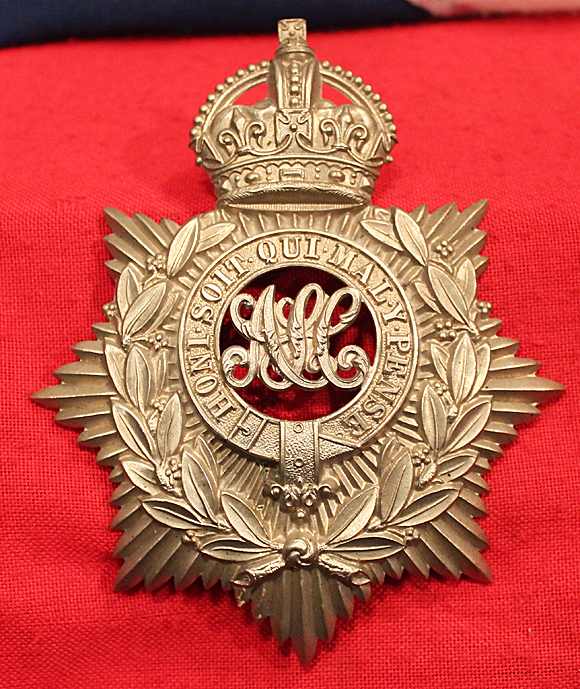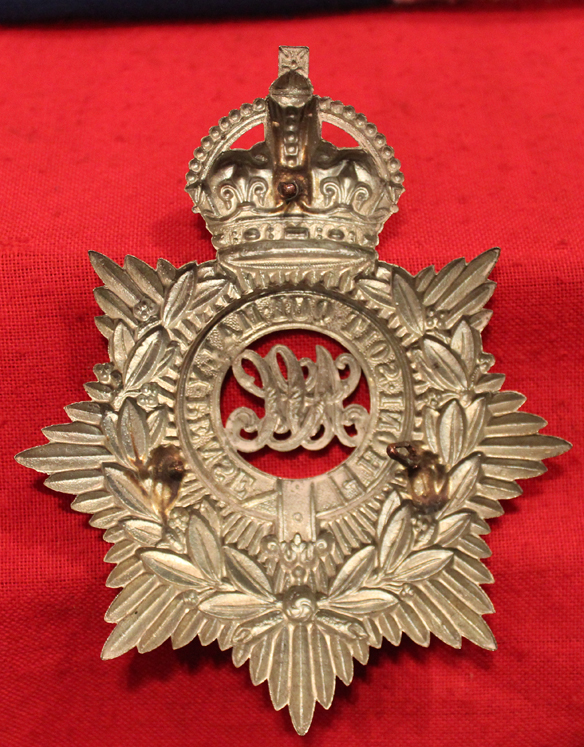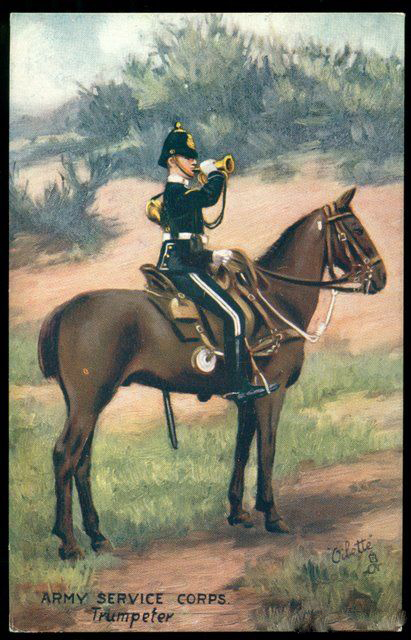A Scarce Pattern, Edwardian Army Service Corps Helmet Plate
This is not the standard type used from 1902 as they are gilt and have an upright capitalised type font. The Canadian version is very similar but with the word Canada below within asmall scroll, and again, gilt, whereas this example is white metal. Two lugs remaining. The officers and men of the ASC ? sometimes referred to in a joking way as Ally Sloper?s Cavalry ? were the unsung heroes of the British Army in the Great War. Soldiers can not fight without food, equipment and ammunition. They can not move without horses or vehicles. It was the ASC?s job to provide them. In the Great War, the vast majority of the supply, maintaining a vast army on many fronts, was supplied from Britain. Using horsed and motor vehicles, railways and waterways, the ASC performed prodigious feats of logistics and were one of the great strengths of organisation by which the war was won. The largest element of the ASC was the Horse Transport section.
Most Horse Transport Companies were under orders of Divisions, with four normally being grouped into a Divisional Train. Others were part of the Lines of Communication where they were variously known by subtitles as Auxiliary Supply Companies or Reserve Parks.
Soldiers who served in the Horse Transport usually had the letter T as a prefix to their number. The British Army was already the most mechanised in the world when the Great War began, in terms of use of mechanical transport. It maintained that leadership, and by 1918 this was a strategically important factor in being able to maintain supply as the armies made considerable advances over difficult ground.
All Mechanical Transport Companies were part of the Lines of Communication and were not under orders of a Division, although some (unusually known as Divisional Supply Columns and Divisional Ammunition Parks) were in effect attached to a given Division and worked closely with it. Those in the Lines of Communication operated in wide variety of roles, such as being attached to the heavy artillery as Ammunition Columns or Parks, being Omnibus Companies, Motor Ambulance Convoys, or Bridging and Pontoon units.
Soldiers who served in the Mechanical Transport usually had the letter M as a prefix to their number.
Code: 20295
195.00 GBP



